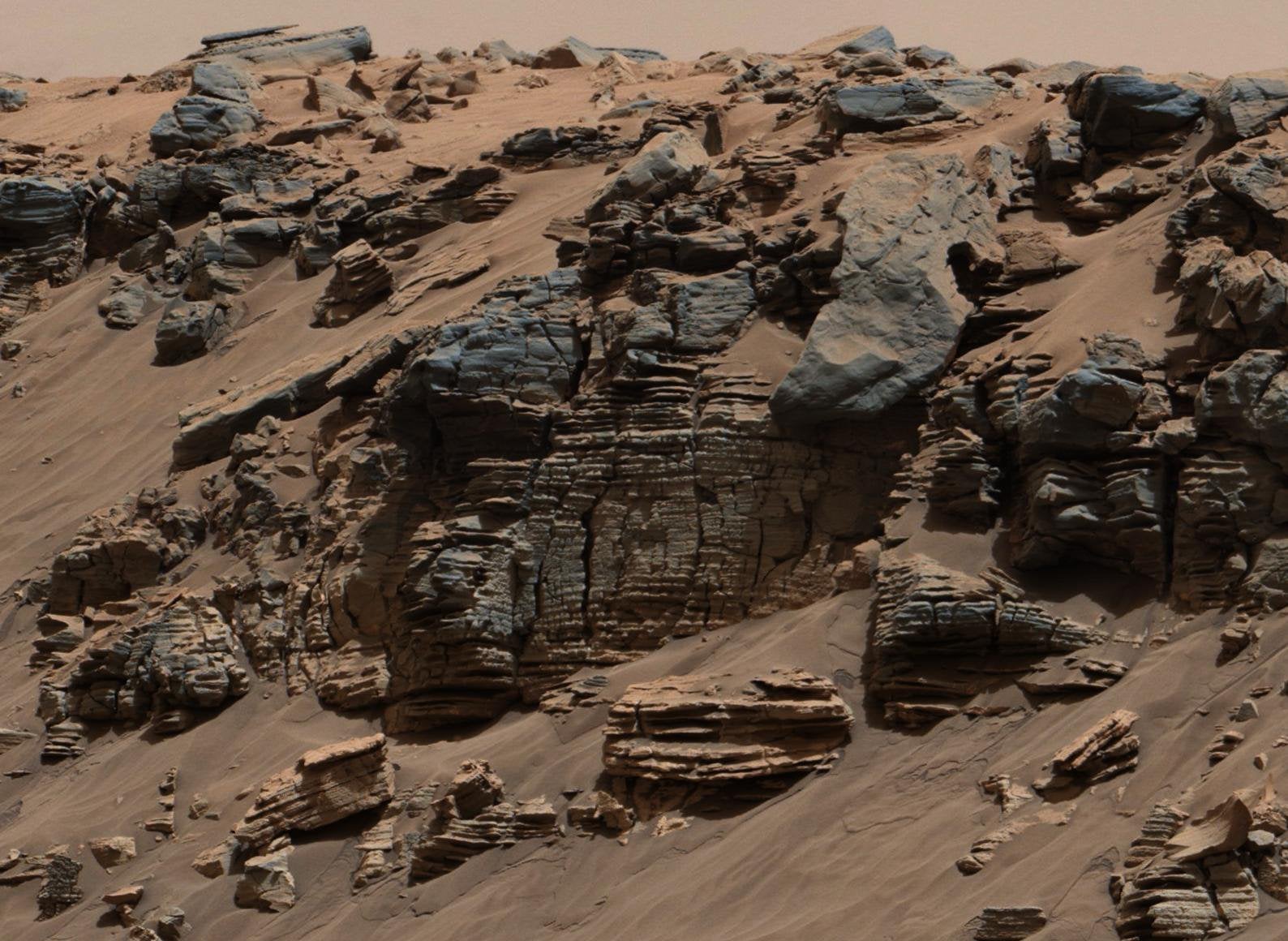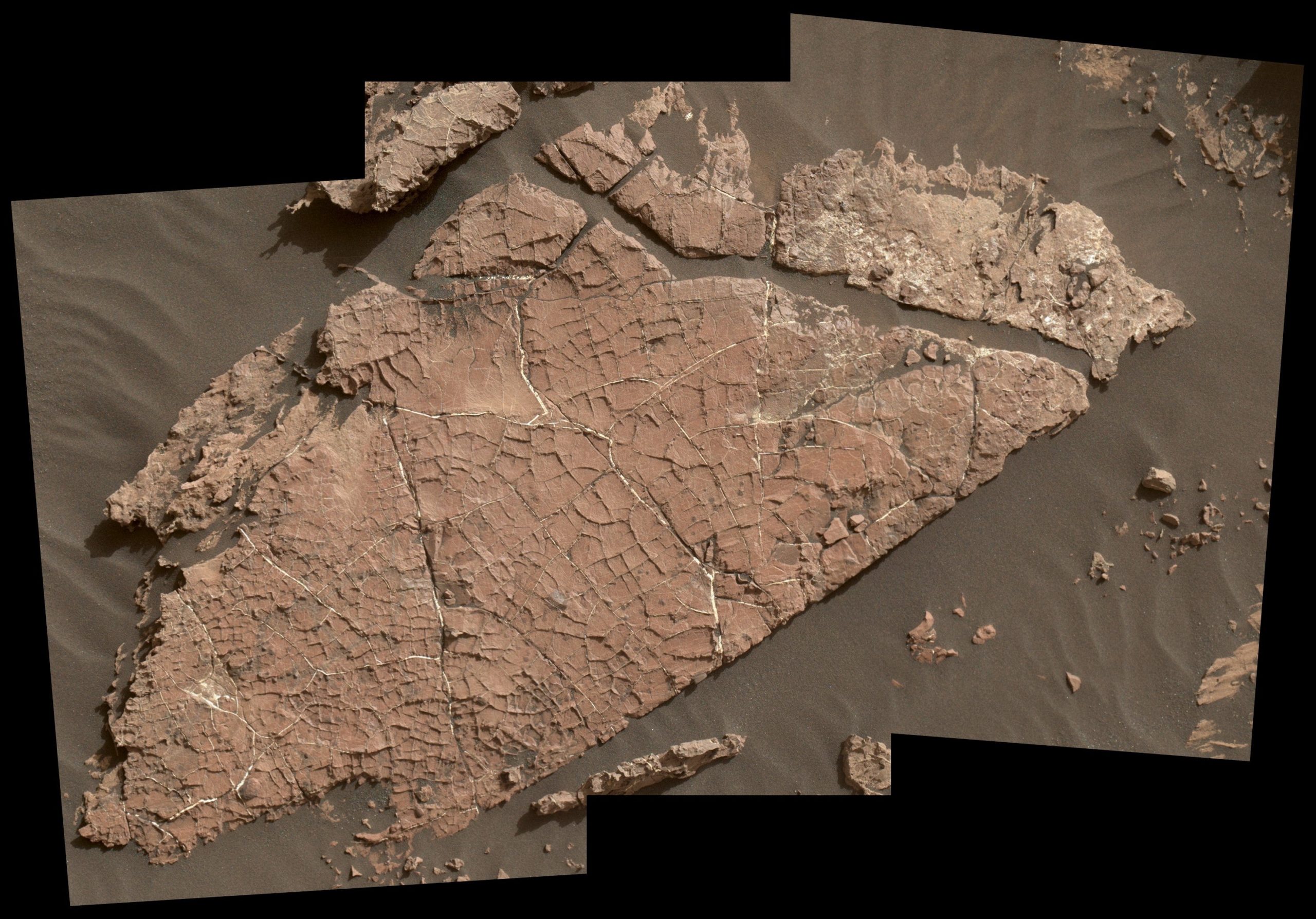Rocks on Mars preserve a record of the planet’s ancient past, but a surprising discovery made by NASA’s Curiosity rover shows some patches of Martian rock have had their histories completely erased.
The primary purpose of NASA’s Curiosity mission is to evaluate the prior potential for habitability on Mars, while the newly arrived Perseverance mission aims to find actual remnants or signs of prior life. To that end, Curiosity has been investigating sedimentary rocks in Gale crater, which are filled with clay minerals. Clay is an important marker of habitability, as it suggests the past presence of liquid water — a key ingredient for life.
Using its Chemistry and Mineralogy instrument, also known as CheMin, the six-wheeled rover has been analysing drill samples of sedimentary layers along the lower reaches of Mount Sharp. In 2019, a fortuitous pathway from Vera Rubin ridge to Glen Torridon made it possible for Curiosity to examine a mudstone layer that formed in a Martian lake some 3.5 billion years ago.

The rover took samples from two areas located less than 1,310 feet (400 meters) apart. Research published today in Science describes unexpected differences in these two areas, as one patch featured only half of the expected amount of clay minerals. Instead, these ancient mudstones were packed with iron oxides, which, interestingly enough, is the stuff that gives Mars its iconic red hue.
The mudstone from both patches dates back to the same time and place, so they should contain similar amounts of clay minerals. This surprising observation required the researchers, led by Tom Bristow from NASA’s Ames Research Centre, to conjure an explanation for the missing clay. Indeed, ancient rocks are known for being repositories of history, but as the new research shows, natural geological processes can undo this record.
To explain what happened, the team posited a scenario in which water leaked down into the clay from a sulfate deposit located directly above. The supersalty brines seeped through grains of sand at the bottom of the former lake and, by doing so, forever changed the mineral-rich layers below.

“We used to think that once these layers of clay minerals formed at the bottom of the lake in Gale Crater, they stayed that way, preserving the moment in time they formed for billions of years,” Bristow explained in a NASA statement. “But later brines broke down these clay minerals in some places — essentially resetting the rock record.”
In an email, Bristow said the new research adds to the steadily emerging picture of ancient Martian habitability.
“It backs up previous evidence that showed fluids continued to move through Gale crater rocks long after they were deposited,” he explained. “It also shows that there were geochemical gradients — some parts of the rocks were affected more than others and fluid chemistry changed,” said Bristow, adding that biological organisms “can use geochemical gradients to capture energy.”
This process wasn’t uniform across the bottom of the former lake, as it happened after the lake lost its liquid water, according to the research. Groundwater in Gale crater continued to flow — and also transport and dissolve chemicals — beneath the surface. As a consequence, some pockets of subsurface mudstone were exposed to different conditions. Those pockets exposed to the salty water underwent a process called “diagenesis,” in which the changing mineralogy wiped out the geological — and possibly biological — record.
Interestingly, if not ironically, diagenesis could create environments friendly to microbes even as it erased potential evidence of life, according to John Grotzinger, a co-author of the study and a professor of geology at Caltech.
“These are excellent places to look for evidence of ancient life and gauge habitability,” Grotzinger said in the statement. “Even though diagenesis may erase the signs of life in the original lake, it creates the chemical gradients necessary to support subsurface life, so we are really excited to have discovered this.”
I like this paper for several reasons. First, it improves our understanding of the geological processes on the Red Planet and its unanticipated complexities. Second, it’s a reminder that Curiosity is still doing important work on Mars, even nine years after it first started rolling and as Perseverance begins to steal the limelight.
This study can now inform the Perseverance team as they evaluate targets for investigation and choose rock samples that could eventually be brought to Earth for closer analysis. Excitingly, the two rovers are now working as a team (even though they’re 3,701 km apart), and, in so doing, they can influence each other’s work.
